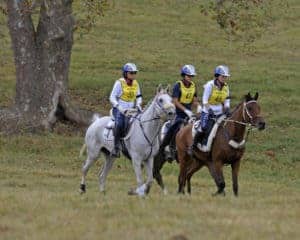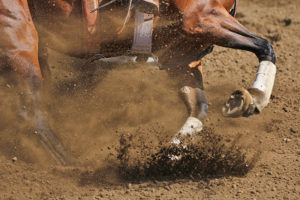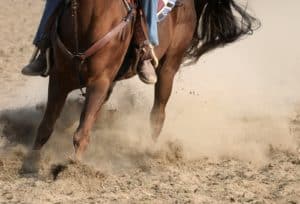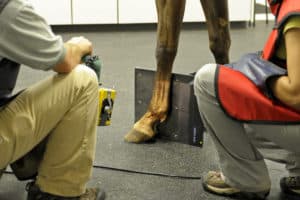
Condition Your Horse Like a Pro
How to help performance horses of all types reach peak fitness.

How to help performance horses of all types reach peak fitness.

A sports medicine specialist looks at what could cause a Western dressage horse to travel haunches-in during the right-lead canter.

No horse is perfect, and many with conformational flaws go on to compete successfully. What can you live with and how?

Knowing how to select the perfect mount, train and condition him properly, and manage his health so he’ll deliver his best in the show pen is how champion riders of reiners, cutters, and rodeo sports succeed.

Learn about four common injuries veterinarians see in these athletes, how they diagnose them, and what treatments and rehabilitation methods they use to get horses back to performance.

A research team used ultrasound to establish normal proximal suspensory ligament cross-sectional areas of cutting horses.

Do you want to improve your dressage horse’s gait score or emphasize your hunter’s “daisy-cutter” trot? A veterinarian offers insight into how good farriery and strategic shoeing can affect movement.

How do you build a nutritional program that supports your high-intensity equine athlete? Three experts share their advice.

Researchers measured the energy output of riders at a basic walk, jog, and lope; performing a reining pattern; and cutting.

PRCA Hall of Famer Douglas Corey, DVM, offered insight into rodeo horse care and welfare during the American Association of Equine Practitioner’s annual convention.

Do you have a cinchy horse? Follow this step-by-step advice to modify his behavior.

Western performance horses are a diverse group of equine athletes trained for a variety of disciplines with unique physical demands. Learn about four common injuries veterinarians see in these athletes, how they diagnose them, and what treatments and rehabilitation methods they use to get horses back to business.

A deep branch lateral plantar neurectomy and fasciotomy procedure can get affected horses back to work.

One practitioner describes her diagnostic imaging decision-making process when assessing Western performance horse soundness during prepurchase exams.

Prevailing wisdom has been that Western disciplines are too physically demanding to allow athletes to return to work after arthroscopic stifle surgery. A study presented at the 2019 AAEP Convention found this isn’t necessarily the case.

The two bodies have differing rules regarding horse age, medication use, and warm-up practices.
Stay on top of the most recent Horse Health news with
© 2022 Copyright Statement dolor sit amet, consetetur sadipscing User Terms, sed diam nonumy eirmod tempor invidunt ut labore et dolore magna aliquyam erat, sed diam voluptua. At vero eos et accusam et justo duo dolores et ea rebum. Stet clita kasd gubergren, no sea takimata sanctus est Lorem ipsum dolor sit amet.
"*" indicates required fields